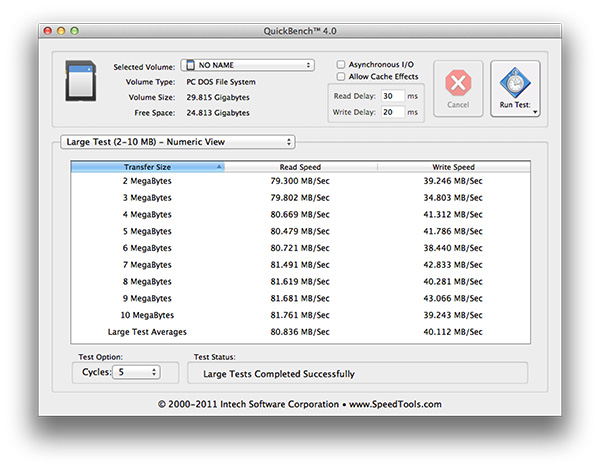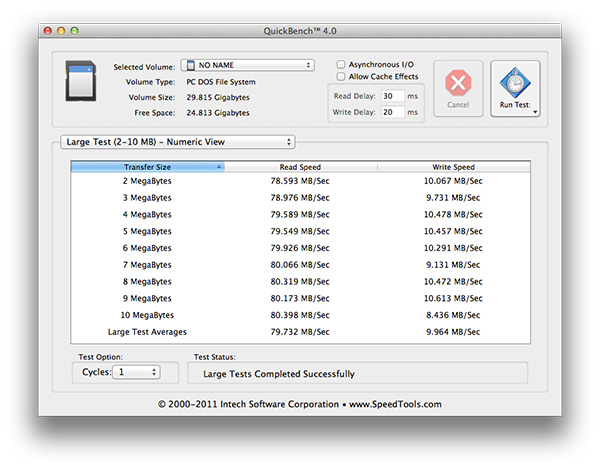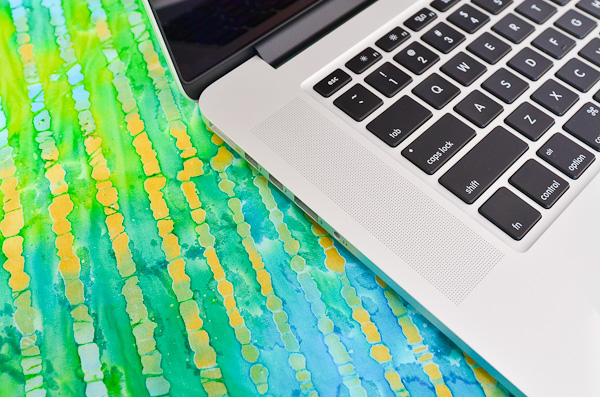The next-gen MacBook Pro with Retina Display Review
by Anand Lal Shimpi on June 23, 2012 4:14 AM EST- Posted in
- Mac
- Apple
- MacBook Pro
- Laptops
- Notebooks
WiFi Performance
The next-gen MacBook Pro is equipped with a decidedly this-gen wireless stack. In other words it uses the same 3x3:3 WiFi solution that was present in the 2011 MacBook Pro and is present in the non-Retina 2012 MacBook Pro as well: Broadcom’s BCM4331. The wireless behavior characteristics are a bit different since this is a physically different chassis, but we’re still dealing with a 3-stream 802.11n solution - not 802.11ac. All three antennas are located in the Retina Display’s housing.
We have seen Apple be conservative with component choices in the past. Deciding to stick with Samsung’s 45nm LP process for the A5X instead of embracing 32nm LP sooner with the 3rd gen iPad is one example that comes to mind. Like a good silicon company Apple appears to mitigate risk in design by sticking with known-good components wherever possible. Major changes to the industrial design are typically paired with comparatively minor silicon changes, and other components are kept as static as possible so long as they don’t overly compromise experience. While 802.11ac dongles and routers are just arriving today, Apple likely froze the Retina MBP’s wireless configuration quite a while ago. Rather than be caught shipping potentially unratified hardware, Apple went the safe route and stuck with 802.11n.

That’s not to say Apple’s wireless implementation is bad. The 15-inch MacBook Pro has been one of the best behaved notebooks on wireless that I’ve had the pleasure of using. The MacBook Pro with Retina Display is no different. Just like before, the best case negotiated physical rate is 450Mbps when paired with a 5GHz 3x3 access point. Unobstructed, within a couple of feet of the AP, I measured as much as 230Mbps to the Retina MacBook Pro. I tested at three different distances from the AP, through walls and on both 2.4GHz and 5GHz bands. Overall performance seemed comparable to the standard 15-inch MacBook Pro, although it’s definitely faster in some areas and slower in others.
| Location 1 | Location 2 | Location 3 | |
| 2011 MacBook Pro (2.4GHz) | 124.0 Mbps | 12.6 Mbps | 61.6 Mbps |
| Retina MacBook Pro (2.4GHz) | 117.9 Mbps | 87.6 Mbps | 44.0 Mbps |
| 2011 MacBook Pro (5GHz) | 186.8 Mbps | 154.6 Mbps | 24.7 Mbps |
| Retina MacBook Pro (5GHz) | 227.7 Mbps | 156.8 Mbps | 33.7 Mbps |
The second test location consistently performed poorly on the 2011 MBP, only on 2.4GHz however. For the most part there were no real surprises otherwise.
The SD Card Reader
It was our own Brian Klug who clued me into the horrible behavior of the 2011 MacBook Pro’s SD card reader. Depending on the SD card used, the integrated SD card reader either performed admirably or was the most frustrating part of the Mac experience. Out of the three SD cards I frequently use: a Patriot LX series card, a Transcend and a new UHS-I Patriot EP Pro, only the Transcend card actually works remotely well with the 2011 chassis. Even then, it’s not perfect. I usually have to insert and remove the card at least once before the reader will recognize it. The LX and EP Pro on the other hand are measurably worse. To get the EP Pro to work in the 2011 MBP’s reader I usually have to push the card in then apply upward or downward force to the exposed edge of the card to get it to read properly. Even then it’ll usually disappear from OS X or be present but read at bytes per second. I doubt this is the fault of the card itself but rather the latest example of incompatibility with the horrible SD card reader in last year’s MacBook Pro.
At least with the cards I’ve tested, the Retina MacBook Pro exhibits none of these issues. Over dozens of insertions I had no issues reading from or writing to all three of these cards, including the problematic ones. I ran a Quick Bench test on the EP Pro as it’s the fastest of the lot and came away with reasonable performance as well. Roughly 80MB/s reads and 40MB/s writes. The numbers are shy of Patriot’s 90/50 spec but quite good.
One of the times I was able to get the EP Pro working in the 2011 MacBook Pro I managed to squeeze in a single Quick Bench run. Read performance was almost identical at 80MB/s, but write performance was far lower at only 10MB/s:
Shortly after the test completed I could no longer write to the drive in the 2011 MBP so I suspect the card reader was acting up again. Needless to say, if you like using SD cards with your MacBook Pro the Retina Display model appears to be much better. That’s not to say there couldn’t be other incompatibilities, but in everything I tested it looks like this problem is finally fixed.
Better Speakers and Dual Mics
Apple is proud of its new speaker design in the Retina MacBook Pro. There’s not a whole lot you can do for tiny laptop speakers but despite shrinking the overall volume of the chassis, Apple has managed to deliver much better sound out of the new speakers in the rMBP. Like most of the upgrades to the next-gen MacBook Pro, you really need to do an A/B comparison to appreciate the difference. And keep your expectations in line with reality, a good set of external speakers are always going to sound better. With that said, the new speakers definitely deliver a fuller, more rich sound than their predecessor. You can still tell you’re listening to some form of integrated speakers, but now they sound distinctly less like they’re coming from a inside a notebook.
In preparation for Mountain Lion's arrival with dictation support, Apple outfitted the next-gen MacBook Pro with dual microphones in order to better focus on your spoken voice and not on background noise. In practice the new mics work reasonably well, rejecting moderate volume background noise. Loud music nearby will still cause interference and as always, accurate dictation requires more than just good quality source audio to get right.













471 Comments
View All Comments
rs2 - Monday, June 25, 2012 - link
...the $2200 one that doesn't include an optical drive and has nowhere to put one. It's not like I want my $2200 device to be usable as an impromptu blu-ray player or anything like that. No, I have money to burn buying extra appliances that do things that my pricey laptop should be able to do, but can't.That's what I might say if I had a hole in my head, at any rate.
rs2 - Monday, June 25, 2012 - link
Also, statements like this seem at least somewhat questionable:"The absence of an integrated Gigabit Ethernet port will surely bother some, but Apple offers a Thunderbolt to GigE adapter for $30 to accommodate."
So Apple leaves out a feature that many people would expect as standard in a high-end laptop, but it's okay because they also happen to sell an optional, paid add-on accessory that provides gigabit ethernet connectivity? Same goes for their $10 power-supply adapter cable.
How about calling them out for trying to nickel-and-dime people to death?
Fx1 - Monday, June 25, 2012 - link
God people like you make me sick.95% of people never used the ethernet port. i would rather than 25% shaved off the profile and weight. 10$ isn't much if your one of the sad people to have to use an ethernet.
Spending £2000 on a laptop I'm not going to care about £7 on a adapter
Spunjji - Tuesday, June 26, 2012 - link
Chill. Either you're sick a lot or you're being hyperbolic...Putting Ethernet in won't increase width by 25%. There are many, many ways to do it and there are thinner laptops out there that support it, even if using hideous dongles. Furthermore there are a wealth of legitimate reasons for wanting it.
Basically what I'm saying is, STFU noob.
Spunjji - Tuesday, June 26, 2012 - link
Yay for paying for baseline features! That adaptor should come as standard with a laptop this expensive. Their penny-pinching with respect to their actual margins is infuriating.ramb0 - Monday, June 25, 2012 - link
Thanks Anand, nice description of what's going on here with the Retina scaling.How is it possible that a 600x600 (for example) image looks better on the rMBP than it does on a standard MBP, and occupies the same amount of screen realestate?
I understand the Backing Scale of 2.0 draws the pixes 4 times more, so therefore appears the same size as on a 1440 screen, but i don't understand how this works for a .jpg image for example.
If it is just using pixel doubling, wouldn't the quality between the "retina" display and normal display be exactly the same, because it is just multiplying each pixel by 4. So essentially you end up with 4 pixels that are the same as each one.
Also, on a separate note, it would be great if you could set the text & UI elements in scale mode of 1680 x 1050 or 1920 x 1200, but keep the "work space" elements as native 2880x1800 (Backing scale 1.0).
wfolta - Monday, June 25, 2012 - link
As I understand it, the image will not look better. Images on disk, say, can look better (because you see pixels you couldn't have seen before). Some websites, like Apple's, will feed you higher-density images than if you were browsing with another machine, and obviously those will look better.Lepton87 - Monday, June 25, 2012 - link
Somehow I doubt that you would be so lenient towards any other company, but if there are glitches in apple hardware it's your fault by your own admission or someone else is at fault. Way to stay neutral and impartial.
Evil_Sheep - Monday, June 25, 2012 - link
Wow, a real bronze medal from Anand! Fewer of these are handed out than Olympic bronze medals in odd-numbered years. And all Apple had to do was innovate and ship a completely revolutionary computing paradigm in displays which, in stark contrast to its PC competition, works virtually flawlessly from day one right down to reprogramming minute graphics routines and on a topic Anandtech has been loudly harping on for years.But never let it be said that Anandtech is too generous with its awards.
Freakie - Monday, June 25, 2012 - link
Hey Anand, or any other employee of the website, aren't there a few parts of this review that very specifically break your traditional object reviews of products and hardware? I mean, it's fine to be excited about something, as Anand is obviously about this laptop, but I think he is so excited that the website's integrity is a little bit compromised. I realize that anyone from the website reading this will recognize that I don't have any right to speak about the integrity of an article written by Anand himself on his own website, but I feel like it should be said anyways, in hopes of keeping your minds clear and objective.It's just things like praising the fact that they got rid of an extra piece of glass on the screen, and how much praise Anand gave for this admittedly stupid thing to point out. As Anand said, this is a matte screen, not a glossy screen, so there being an extra piece of glass in the front would be completely ridiculous, right? The only mention of other matte screens is that those who have used a matte screen in the past are used to not having a protective piece of glass or plastic in between them and when the real LCD starts. Other than that, there isn't anything special about it not having that extra piece of glass. Yet it just baffles me how much Anand goes on about how it has magically been engineered away somehow.
Sorry if I sound pretentiously opinionated. I just really felt that the integrity and methodical reviews that so many people come to Anandtech.com for feels very lacking in this review >_<